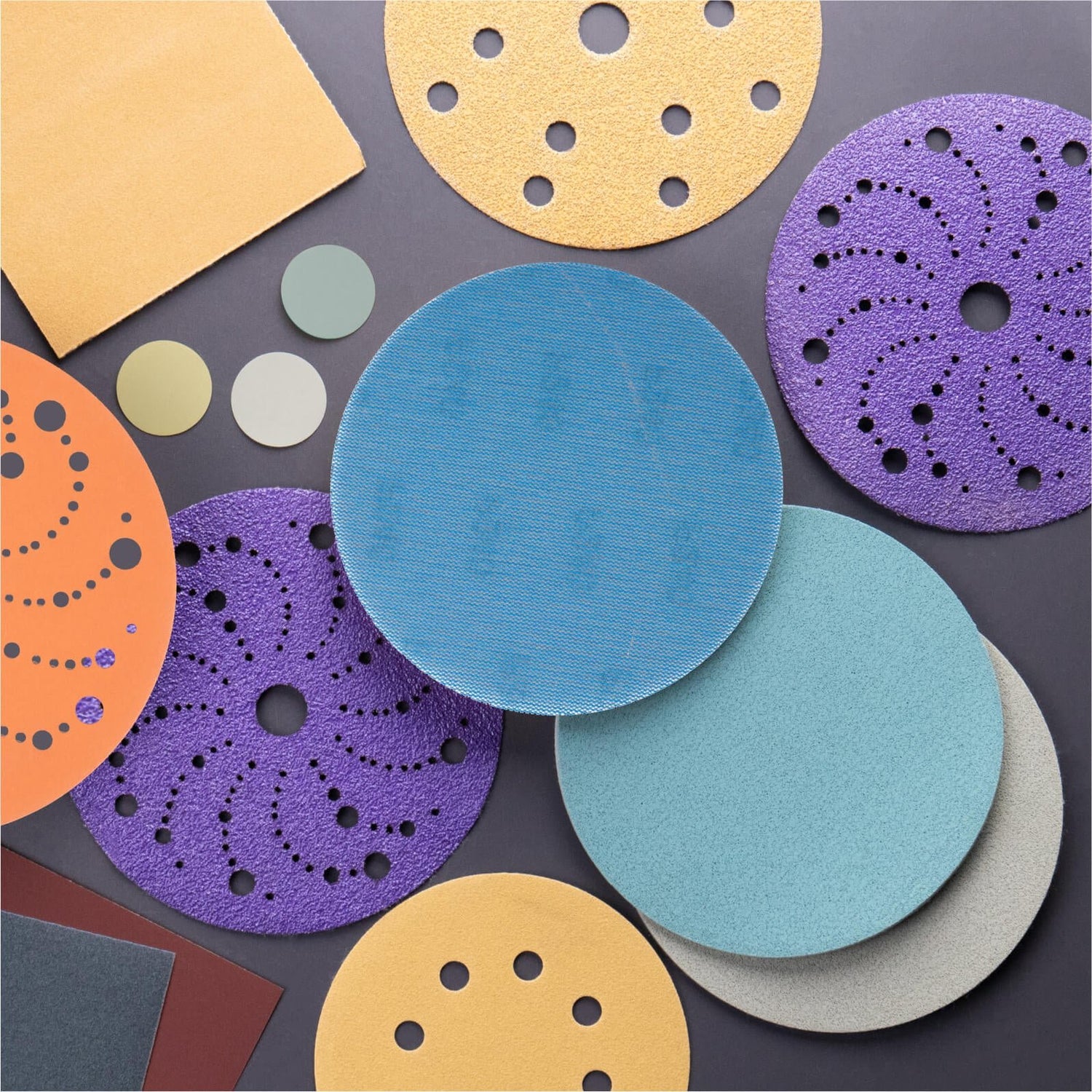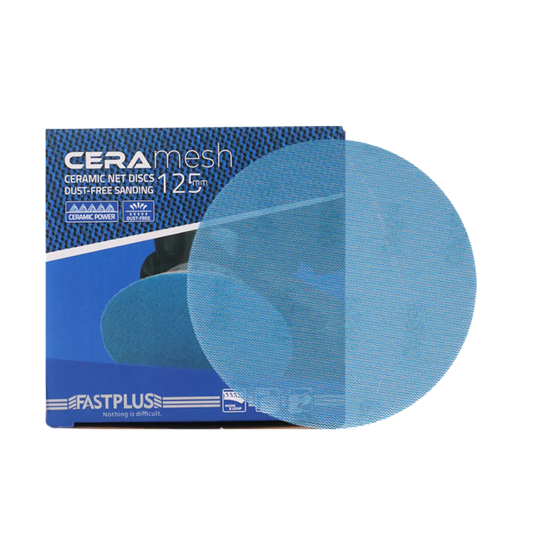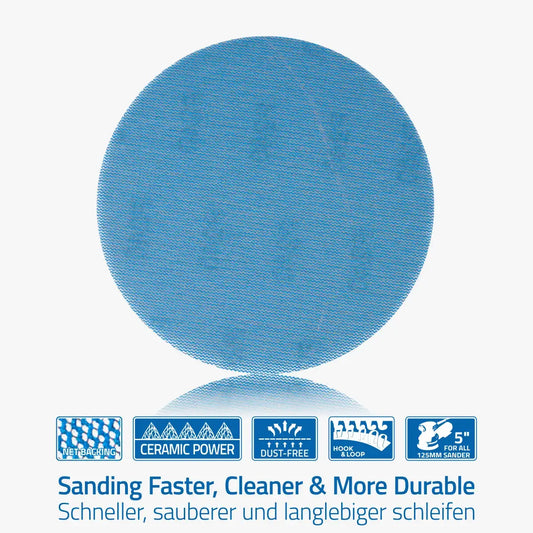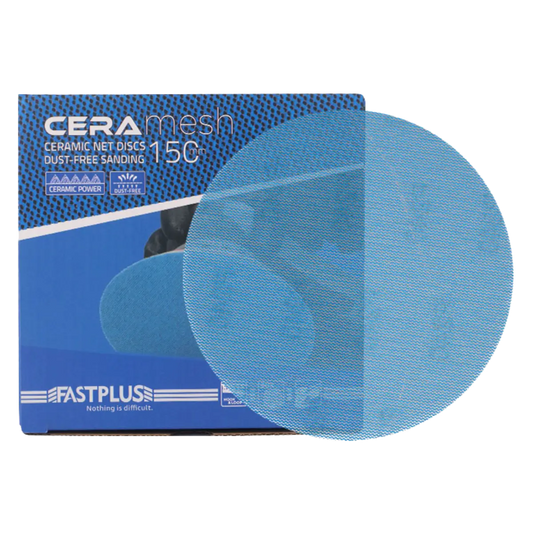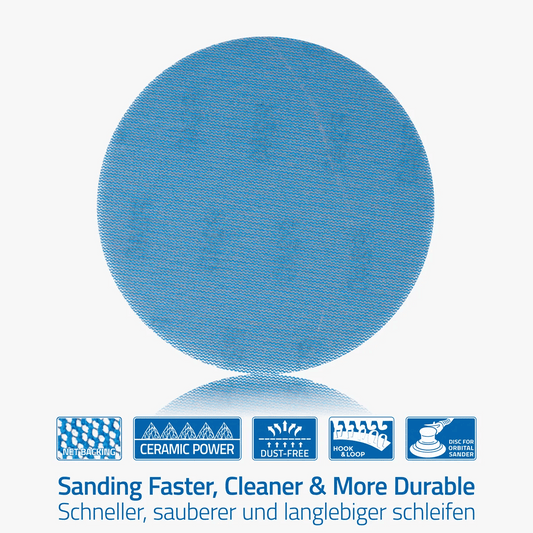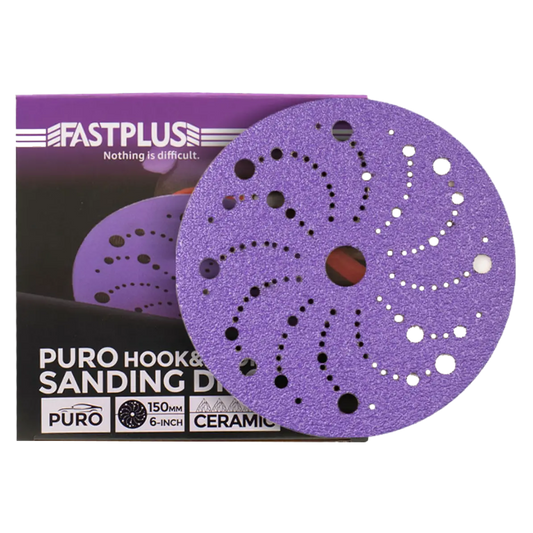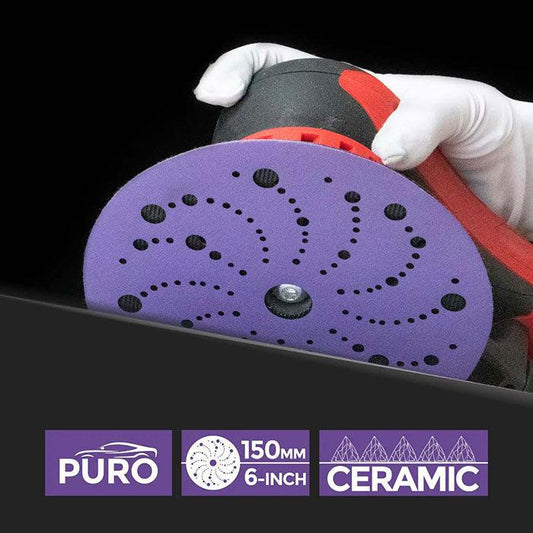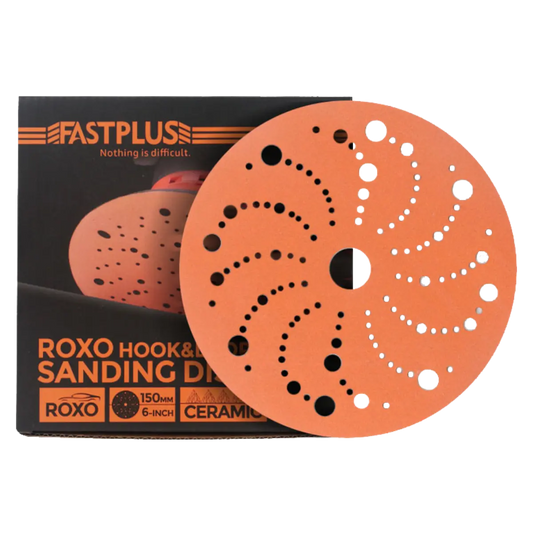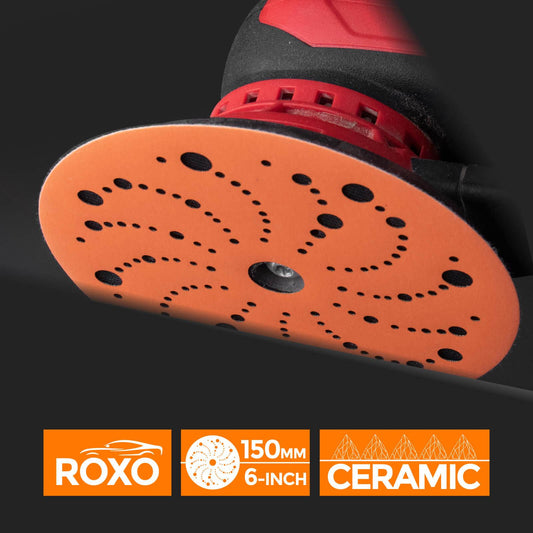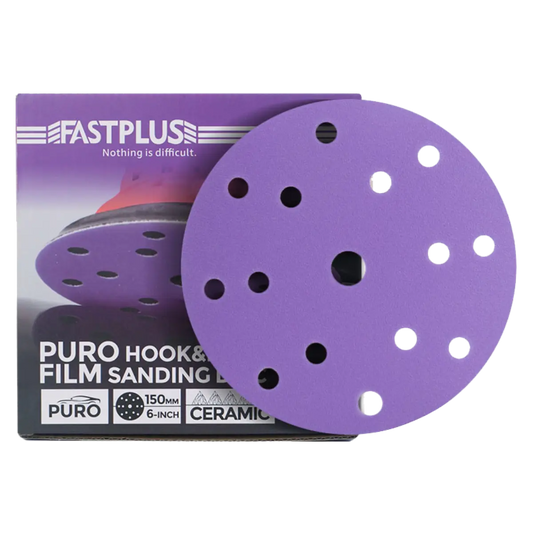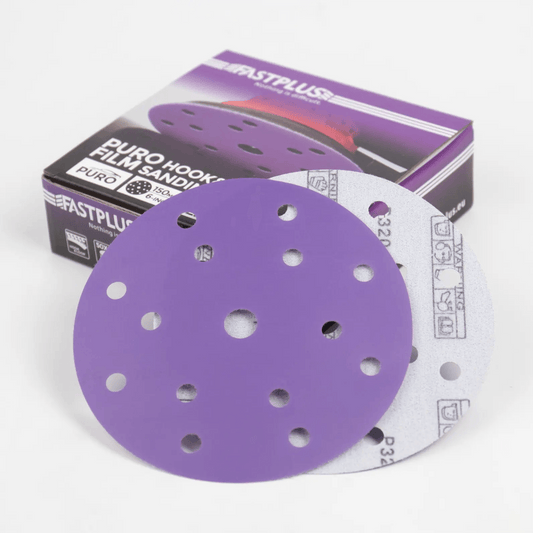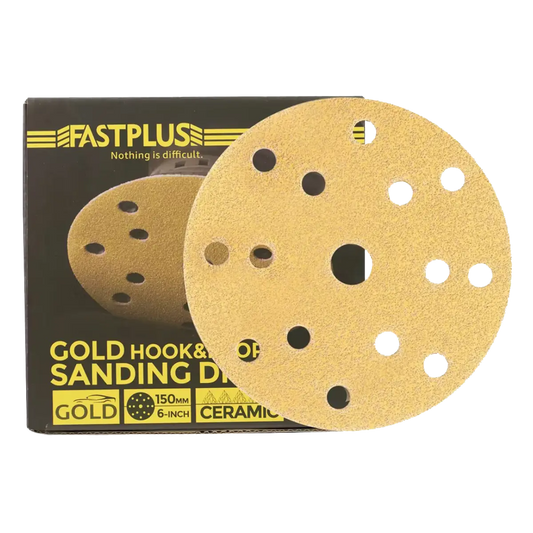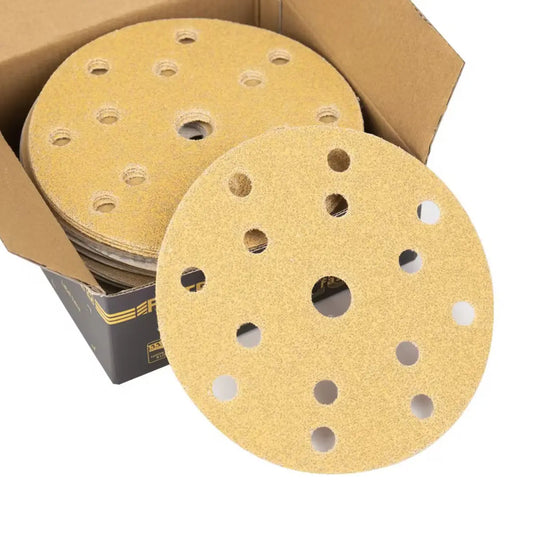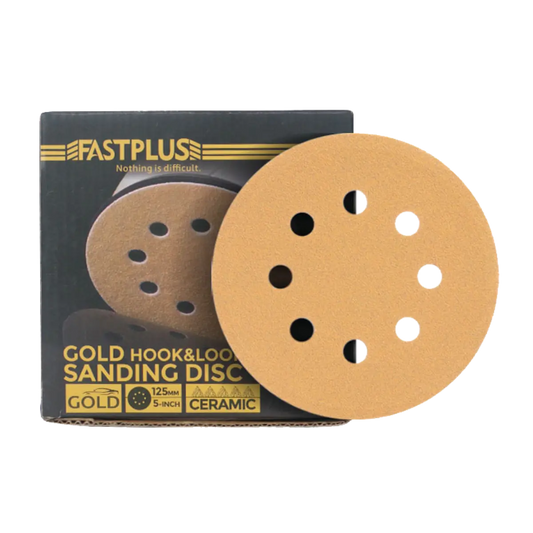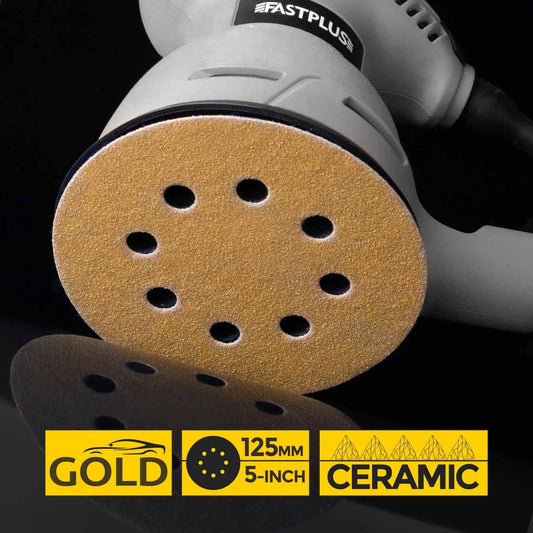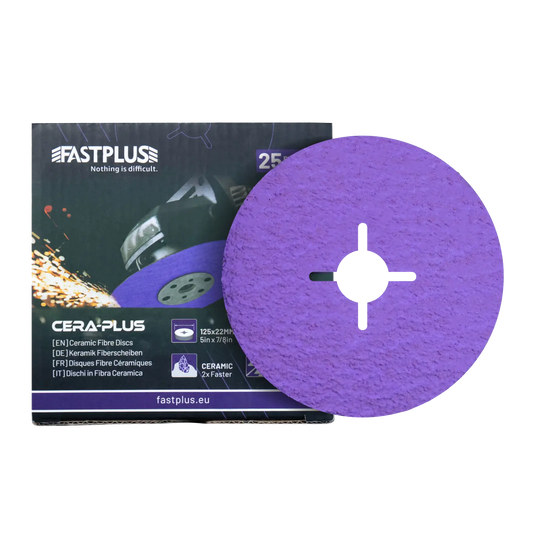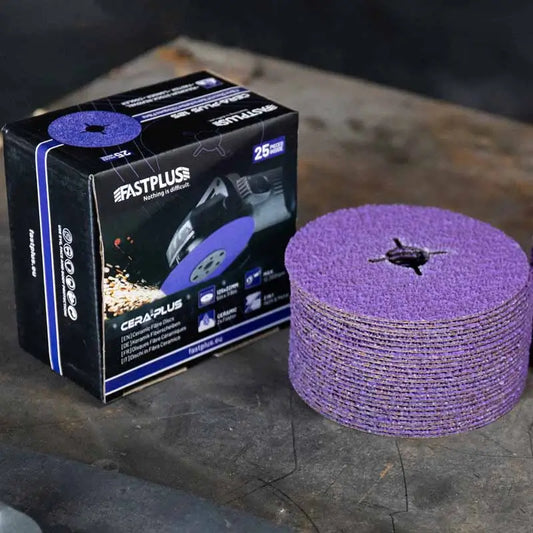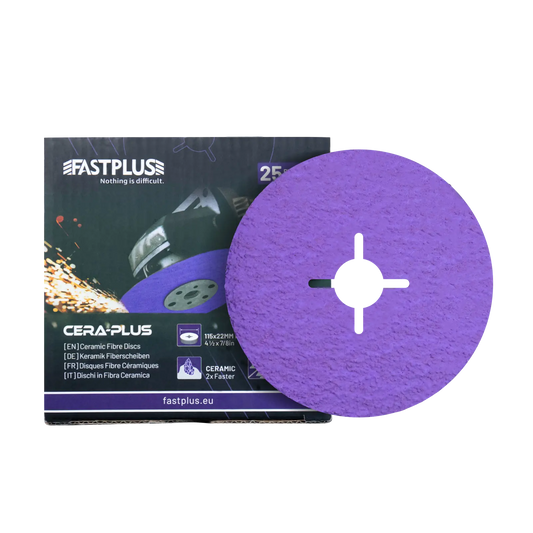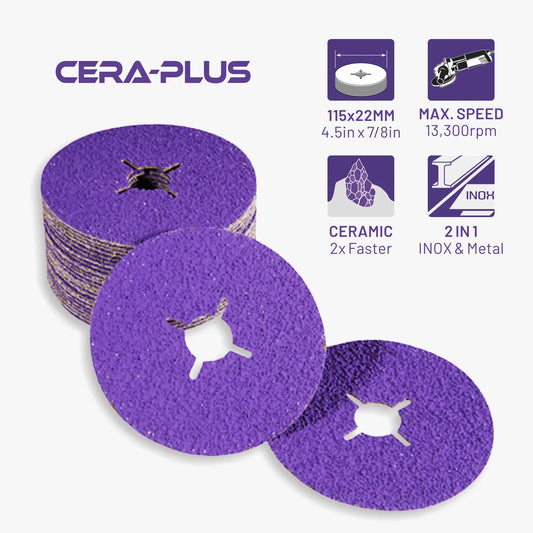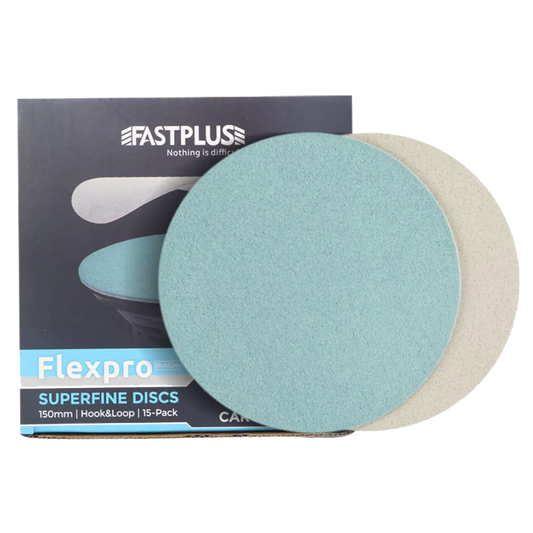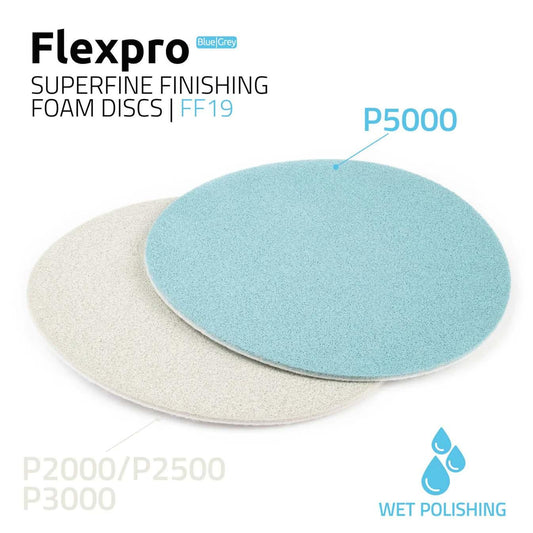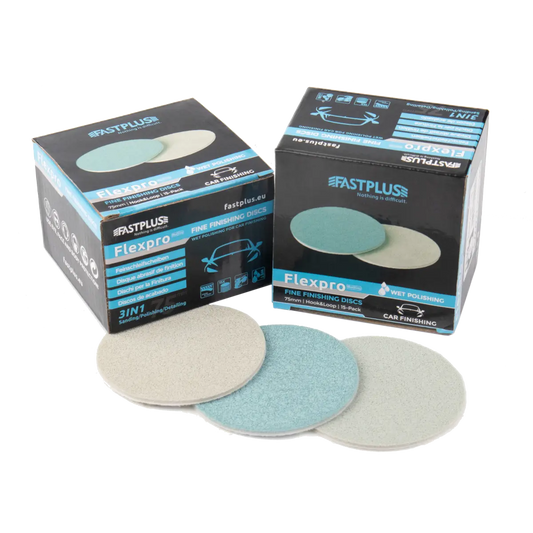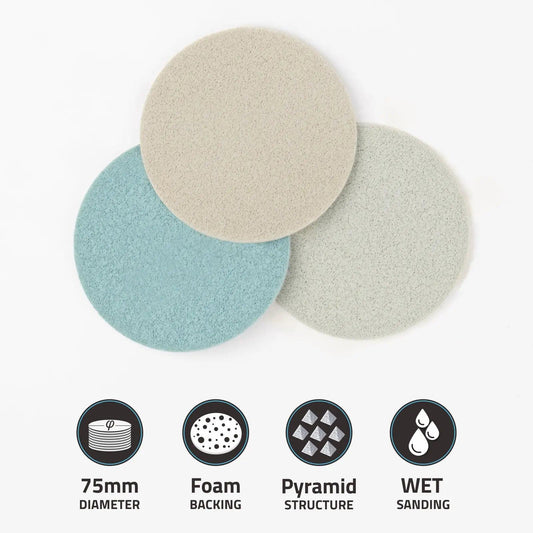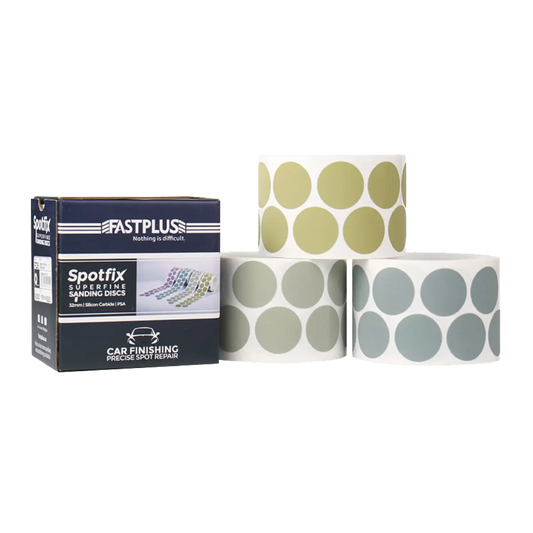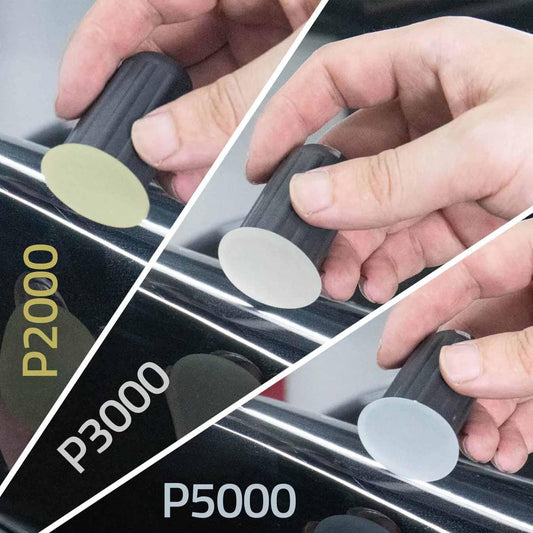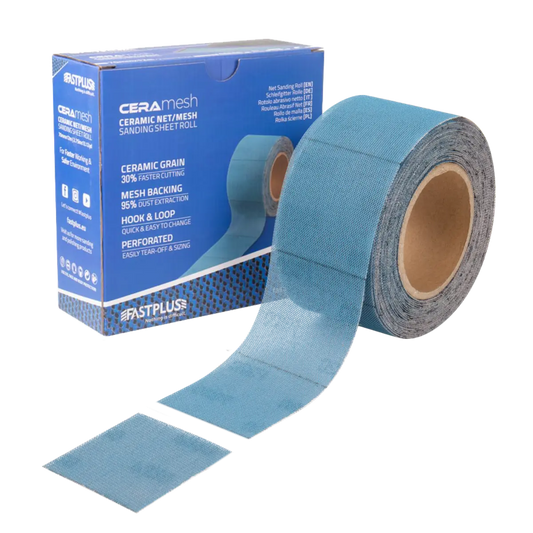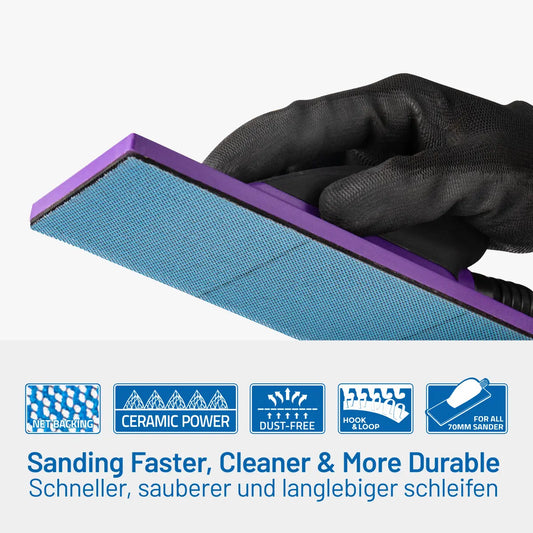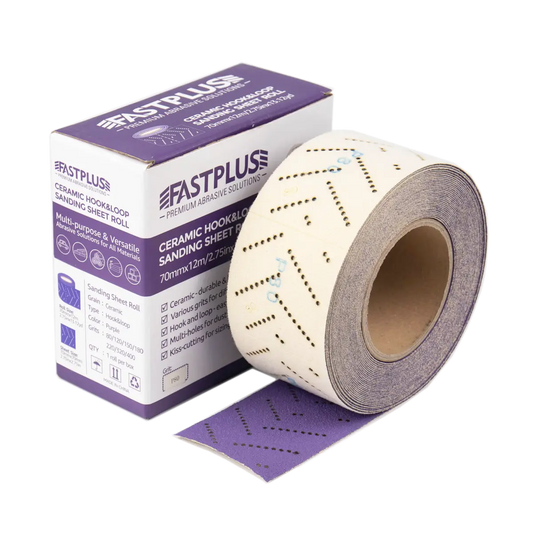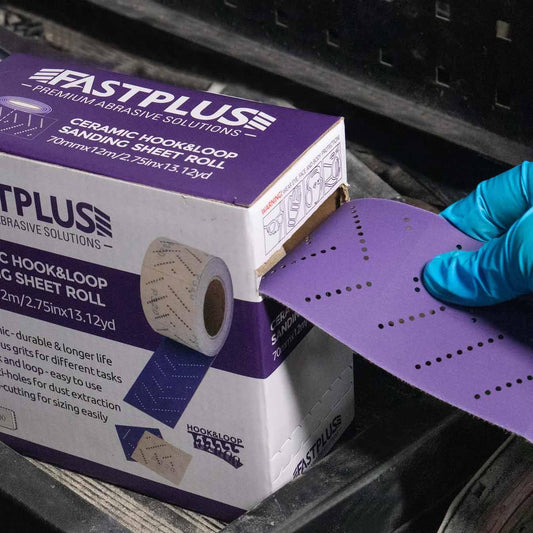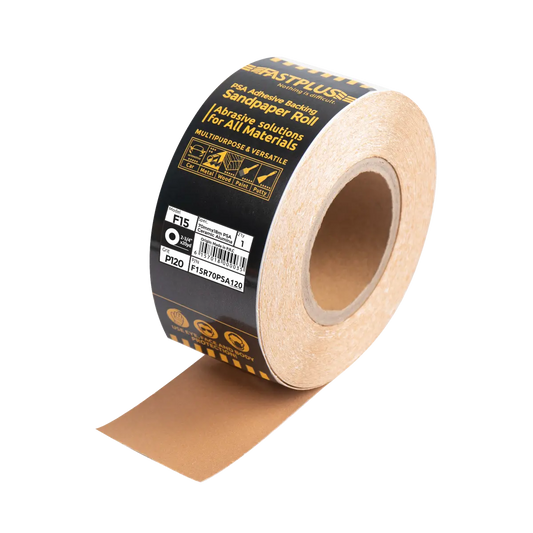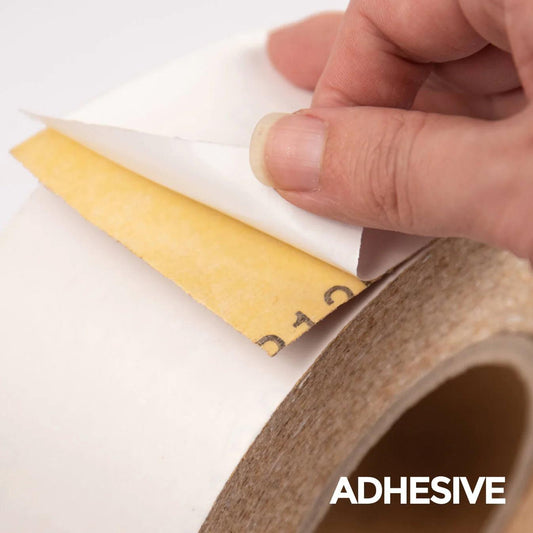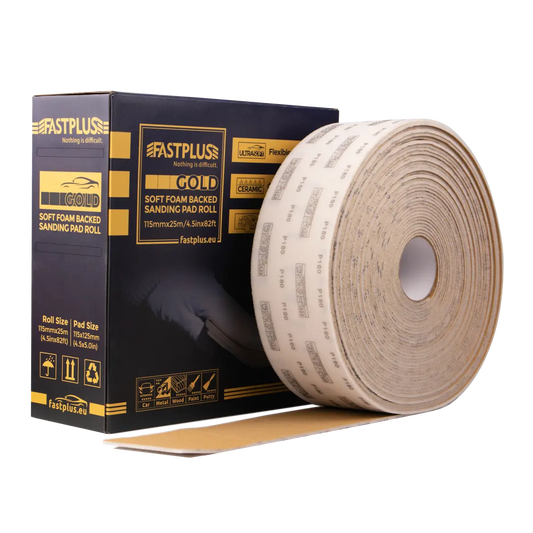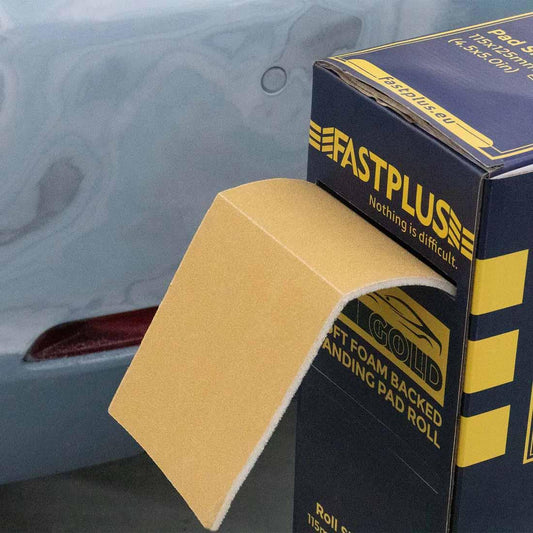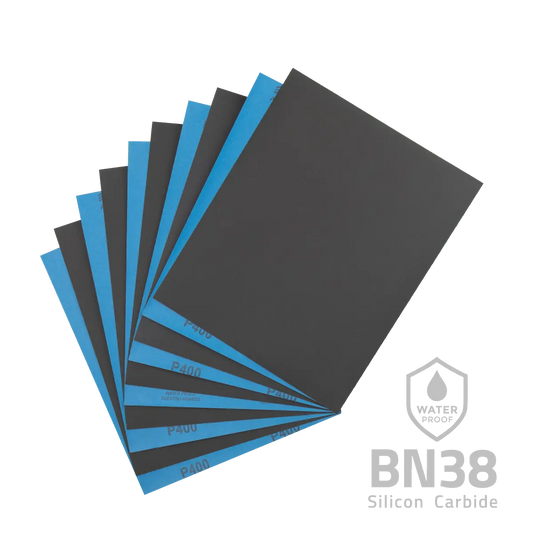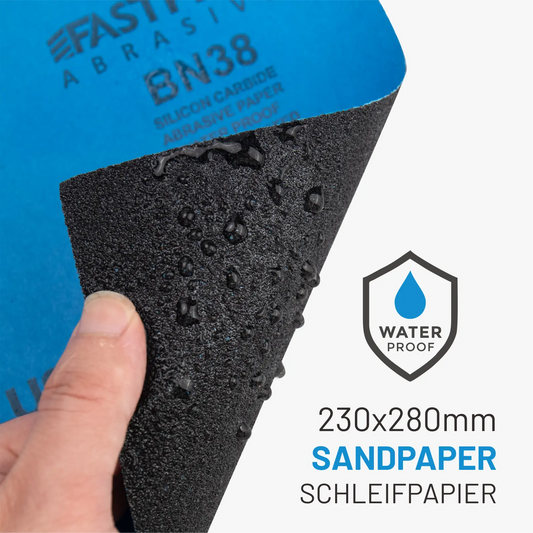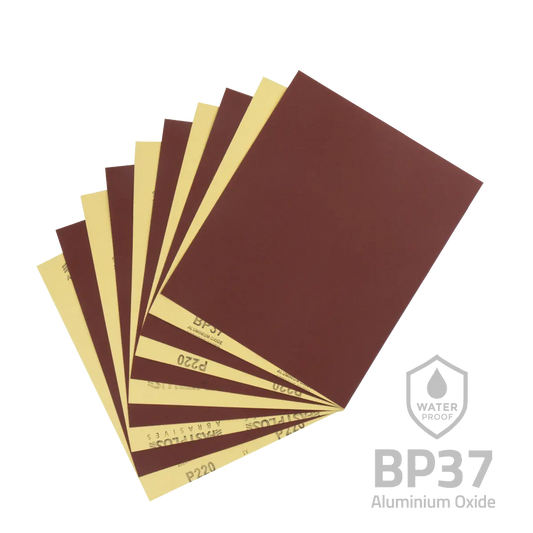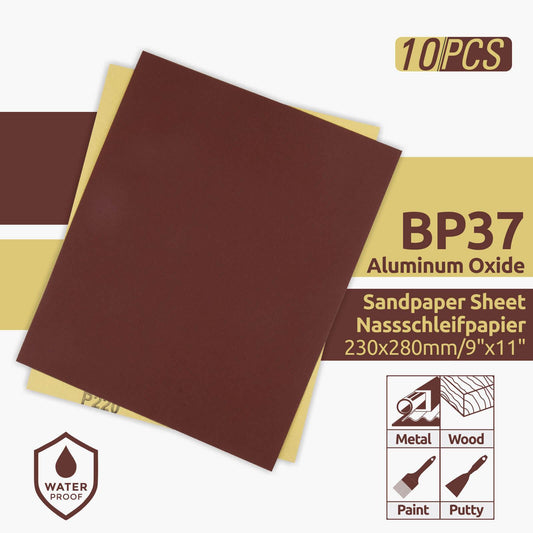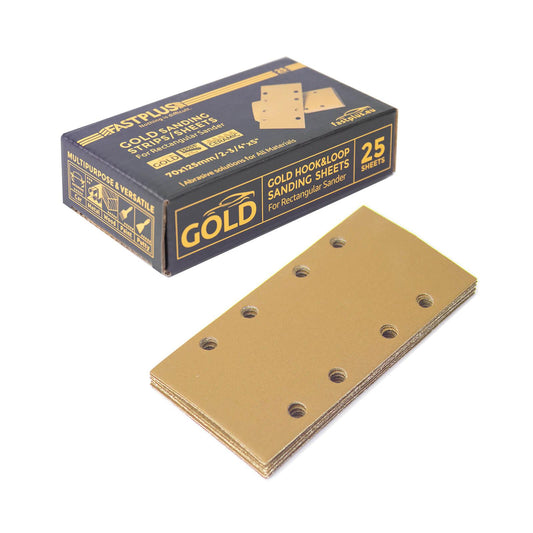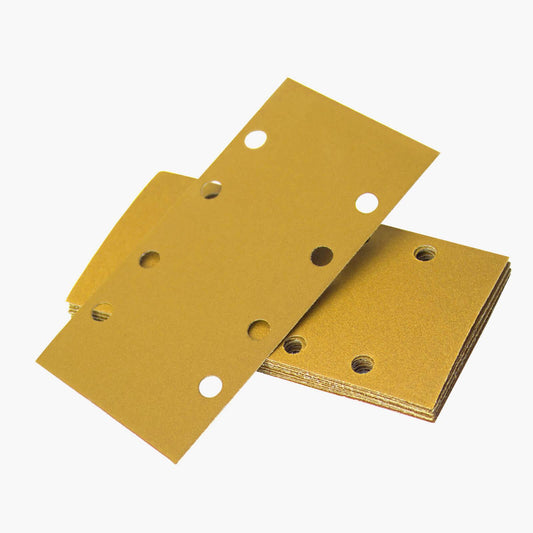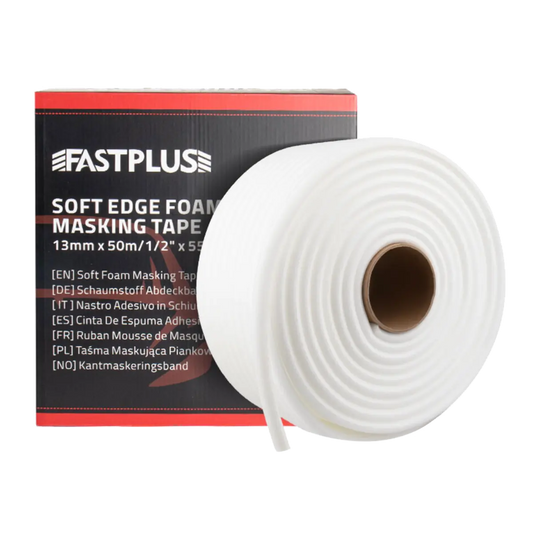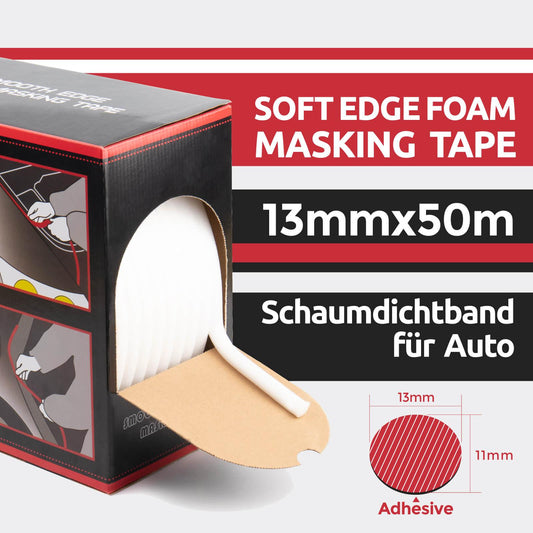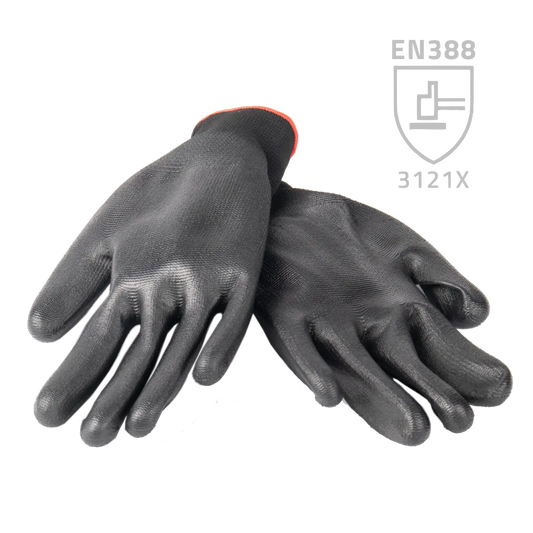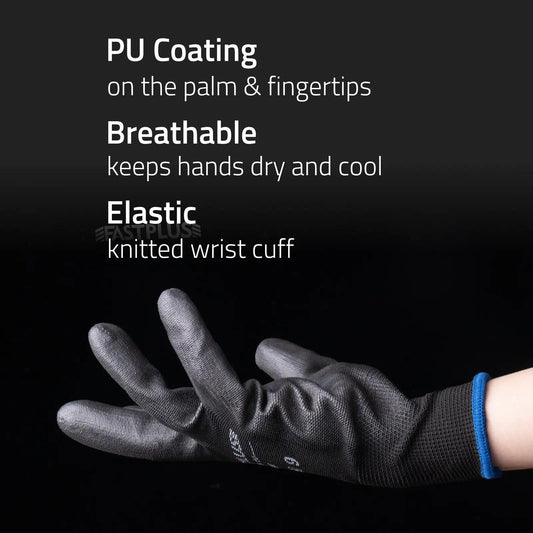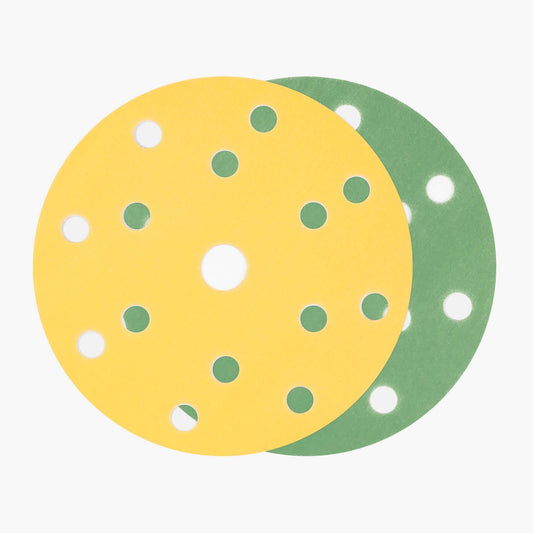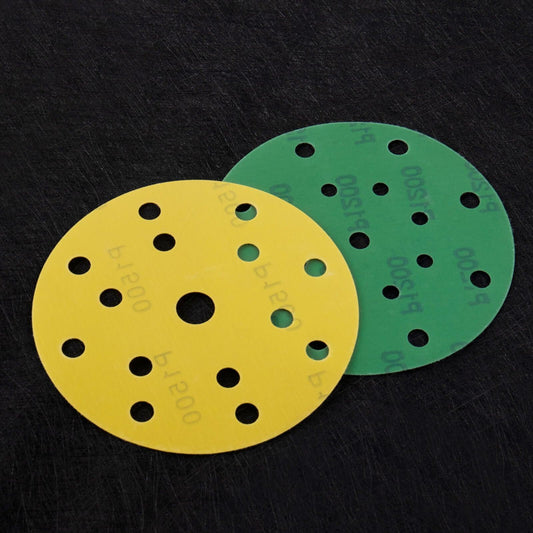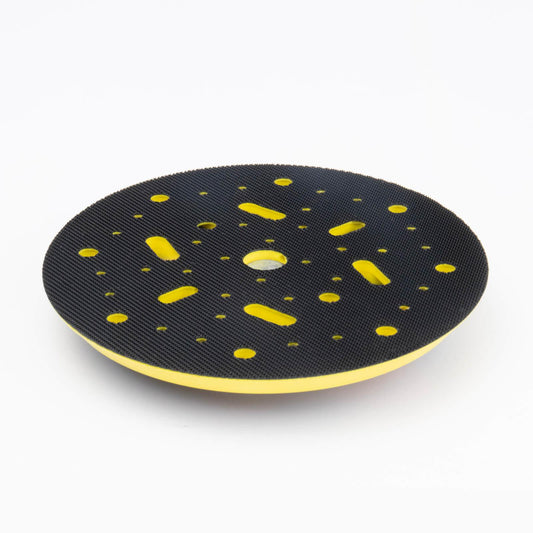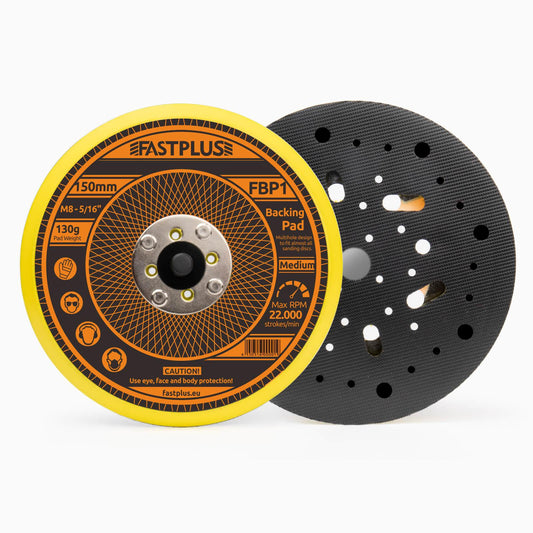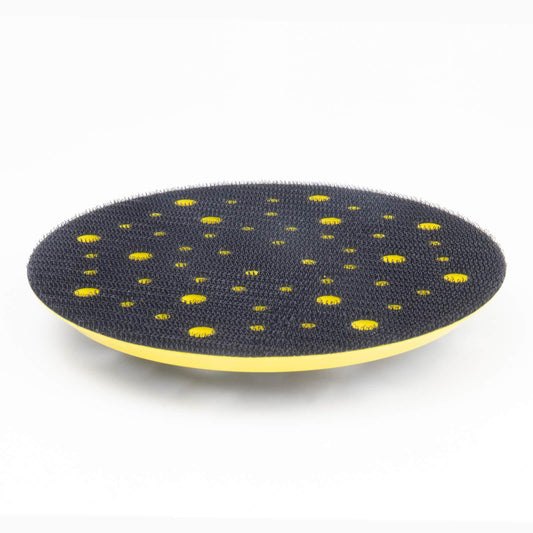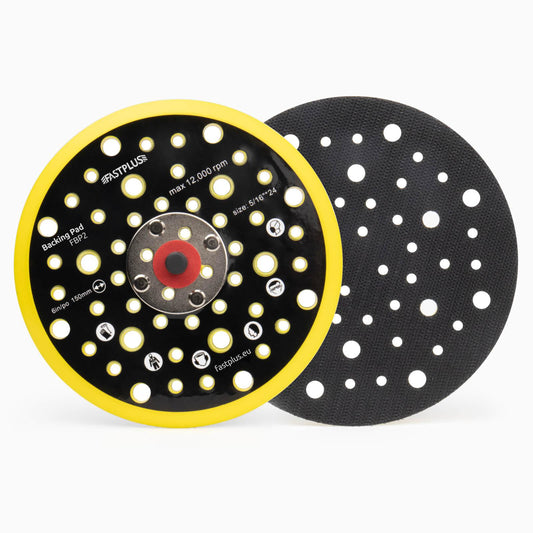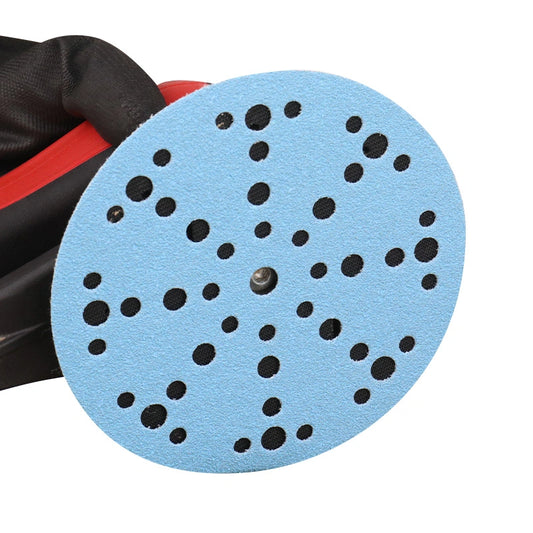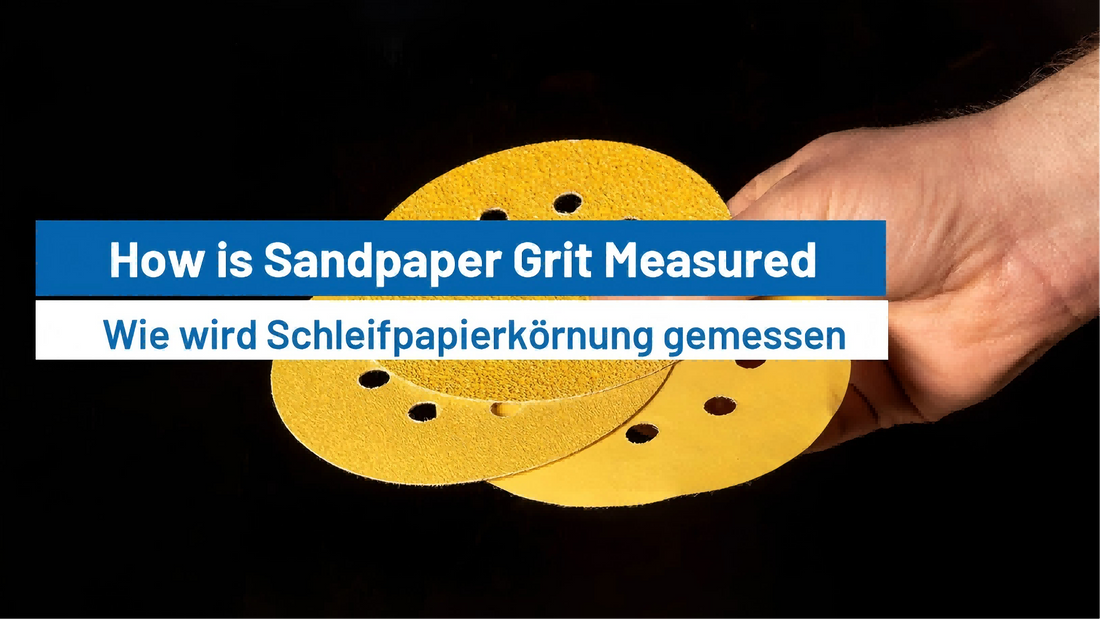
How Sandpaper Grit is Measured?
When working with different materials, whether it's wood, metal, or concrete, choosing the right sandpaper is essential for achieving a smooth, flawless finish. One of the most important factors to consider when selecting sandpaper is its grit size. But what exactly is grit, and how is sandpaper grit measured? In this blog post, we’ll break down what grit means, how it’s measured, and how to choose the right sandpaper grit for your project.
What is Sandpaper Grit?
Sandpaper grit refers to the number of abrasive particles on a square inch of sandpaper. The higher the number, the finer the grit, meaning the abrasives are smaller and closer together. Conversely, lower numbers indicate a coarser grit, with larger particles spaced further apart. Grit size directly impacts how aggressively the sandpaper will sand the surface and what type of finish you’ll achieve.
For example, a coarse grit, like 40 or 60, is perfect for removing material quickly or for heavy sanding tasks like stripping paint or smoothing rough wood. On the other hand, fine grits, such as 220 or higher, are ideal for finishing work, where a smooth surface is required.
How Sandpaper Grit is Measured

Sandpaper grit is measured based on the number of abrasive particles per square inch of sandpaper. Different standards are used worldwide, but the most common ones are the CAMI (Coated Abrasive Manufacturers Institute) and FEPA (Federation of European Producers of Abrasives) systems.
CAMI Grit System
The CAMI system, widely used in the United States and Canada, assigns numbers to grit sizes based on the mesh screen used to sort the abrasive particles. The lower the number, the coarser the grit, while the higher the number represents finer grits.
- Coarse Grits: These range from 24 to 80 and are used for aggressive material removal. Sandpapers in this range are often used for tasks like stripping paint, heavy sanding, or smoothing rough surfaces.
- Medium Grits: These range from 100 to 150 and are suitable for general sanding tasks, such as smoothing rough edges or preparing surfaces for finishing.
- Fine Grits: Grains in the 180 to 220 range are used for finishing and polishing. These grits are great for smoothing surfaces before applying paint or for preparing a wood surface for staining.
- Very Fine Grits: The 240 to 400 grit range is often used for final smoothing or sanding between coats of paint or varnish.
- Super Fine Grits: These range from 600 to 1200 and are used for ultra-smooth finishes, typically in polishing or final touches on automotive or woodworking projects.
FEPA Grit System
The FEPA system, used primarily in Europe, is similar but has slight differences in the grit number scale. Generally, the FEPA system uses P (for "Particulate") followed by the grit number, such as P60, P100, and so on. The FEPA system is typically used for finer grit sandpapers compared to the CAMI system.
The Relationship Between Grit Number and Function
Understanding the grit number is crucial for choosing the right sandpaper for your project. Here’s how the different grit ranges generally work:
Coarse Grit Sandpaper (24 to 80)
Coarse grits are designed for tasks that require significant material removal. These sandpapers are aggressive and are often used in the initial stages of sanding when you need to quickly smooth down rough surfaces or remove old finishes. Coarse sandpaper works well on rough wood, metal surfaces, or removing paint and rust.
- Applications: Paint removal, smoothing rough wood, stripping finishes, sanding concrete or metal, rough shaping.
- Example Grits: 24, 40, 60, 80
Medium Grit Sandpaper (100 to 150)
Medium grit sandpaper is more versatile and is typically used for general-purpose sanding tasks. These grits are less aggressive but still effective at smoothing rough surfaces. Medium grit is perfect for smoothing rough edges, preparing surfaces for finishing, and sanding between coats of paint.
- Applications: Smoothing rough edges, preparing wood for finishing, sanding between paint layers.
- Example Grits: 100, 120, 150
Fine Grit Sandpaper (180 to 220)
Fine grits are used for the final stages of sanding and for achieving a smoother surface. These sandpapers are ideal for finishing tasks, such as preparing wood for staining or applying a coat of paint. Fine grit sandpaper leaves behind a relatively smooth surface, ready for finishing.
- Applications: Preparing wood for staining or painting, finishing wood or metal, light sanding between coats of paint.
- Example Grits: 180, 200, 220
Very Fine and Super Fine Grit Sandpaper (240 and above)
Very fine and super fine grits are used for polishing and ultra-smooth finishing work. These sandpapers are used in the final sanding stages, particularly in automotive work, metal finishing, or high-quality woodworking. These grits are also used for sanding finishes between coats to ensure a flawless, smooth surface.
- Applications: Polishing, final smoothing, removing small imperfections, automotive bodywork, sanding finishes between coats.
- Example Grits: 240, 400, 600, 1200
How to Choose the Right Sandpaper Grit for Your Project

Choosing the correct grit depends on the task at hand and the material you’re working with. Here’s a general guideline to help you select the right sandpaper grit:
- For Heavy Material Removal: If you need to remove a lot of material quickly, use coarse grits (24 to 60). These are great for sanding rough wood, removing paint, or prepping concrete.
- For General Purpose Sanding: Medium grits (100 to 150) work well for smoothing out surfaces, removing minor imperfections, or preparing wood for staining or painting.
- For Finishing Work: Fine grits (180 to 220) are ideal for smoothing out surfaces and ensuring that the finish will be smooth and even. This grit is often used on wood surfaces before applying a finish.
- For Ultra-Smooth Finishing: Very fine grits (240 and above) are perfect for polishing or getting a mirror-like finish, especially in high-quality woodworking or automotive bodywork.
The Importance of Grit Progression
When sanding, it’s important to use a progression of grits. Starting with a coarse grit and gradually working up to finer grits ensures that you effectively smooth out the surface without leaving noticeable scratches or imperfections. For example, if you’re sanding a piece of wood, you might start with 60 grit, move to 120 grit, and finish with 220 grit for a smooth surface ready for staining or painting.
Tips for Using Sandpaper Effectively
- Use the Right Grit for the Task: Always select the appropriate grit for your project. Using too coarse a grit on delicate materials can cause damage, while using too fine a grit on rough surfaces may not remove enough material.
- Don’t Skip Grading: Moving from coarse to fine grits is essential for a smooth finish. Skipping grits can leave scratches that are difficult to remove later on.
- Pressure Matters: Applying too much pressure can damage the material or cause the sandpaper to wear out too quickly. Let the grit do the work and apply consistent, moderate pressure.
- Change Sandpaper Regularly: Sandpaper wears out as it’s used, and dull sandpaper will become less effective. Change sandpaper when it starts to lose its abrasive properties.
Conclusion
Understanding how sandpaper grit is measured is crucial to choosing the right tool for your sanding job. Whether you're tackling rough sanding tasks with coarse grits or achieving a fine, polished finish with very fine grits, the right choice of sandpaper will significantly impact the outcome of your project. By knowing how grit numbers work, you can make informed decisions and achieve the results you’re aiming for in woodworking, metalworking, and other sanding applications.
Choosing the proper grit size may seem complicated at first, but once you understand the basics of grit measurement, you’ll be able to select the perfect sandpaper for any project with confidence. So next time you're gearing up to sand, take a moment to consider your options—and achieve that perfect finish!
